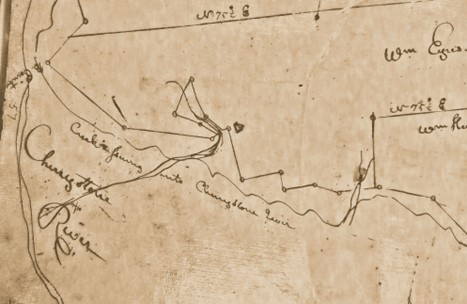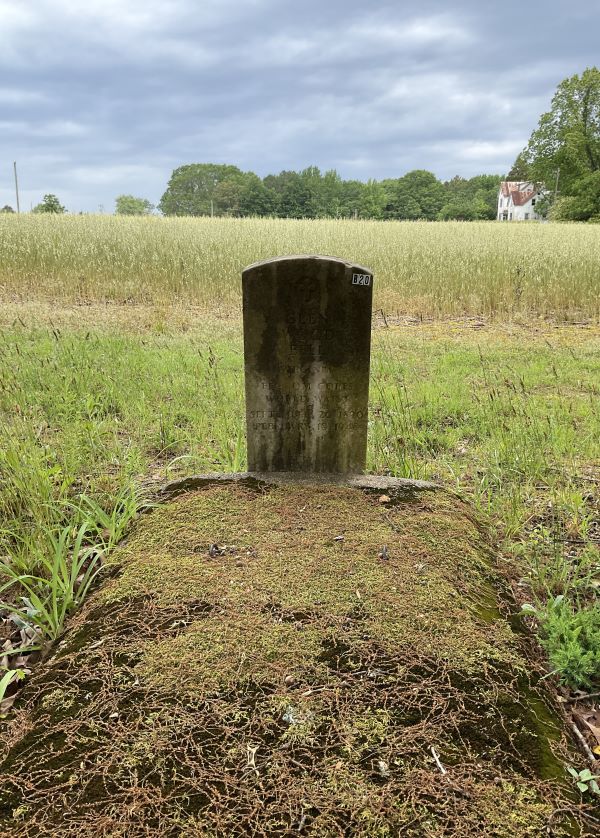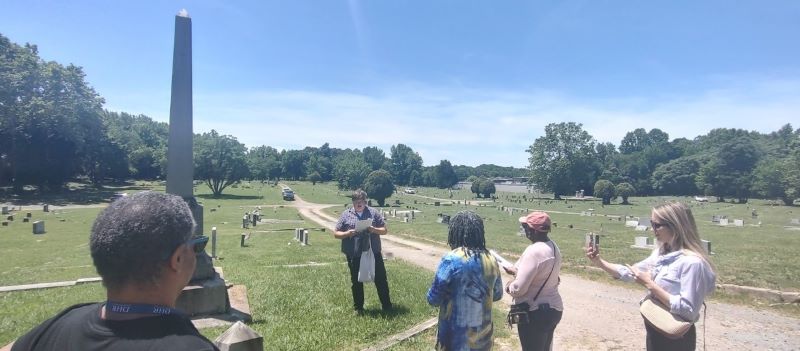Kingsmill Revisited: The Skiffes Creek Curation and Conservation Project

The latest on a project partly funded by DHR’s Save America’s Treasures grant award, a funding program developed by the National Park Service (NPS) in partnership with the National Endowment for the Arts (NEA), the National Endowment for the Humanities (NEH), and the Institute for Museum and Library Services (IMLS).
By Chelsea Blake | DHR Archaeological Conservator and Project Manager
Located along the James River five miles south of Williamsburg, Kingsmill contains diverse archaeological sites, including seven plantations from the 17th and 18th centuries with multiple quarters for enslaved people. Archaeological excavations were sparked in the 1970s by the sale of 3,900 acres to Anheuser-Busch for the construction of a brewery, a theme park, and a neighborhood with a golf course and resort. Working with Anheuser-Busch, archaeologists were able to excavate ahead of the construction. Seventeen sites were unearthed and recorded before they were built upon.

The Skiffes Creek Curation and Conservation project started in 2021, after DHR gained ownership of the Kingsmill collections in 2018 and the boxes were transferred to the repository in Richmond. The project is partly funded with a Save America’s Treasures (SAT) grant fund and encompasses 10 archaeological sites that yield 228 boxes of artifacts. In total, 18,873 artifacts were cataloged during the curatorial portion of the project. These artifacts were recovered from excavations that began in the 1970s.
Given the variety of site types and the identification of several sites of housing for the enslaved, excavation data and associated collections offer an opportunity to examine the lives of those other than the wealthy landed gentry of colonial Virginia. As an extensive set of colonial contexts, the Kingsmill collection has been recognized as historically significant since the sites underwent excavations in the 1970s. Kingsmill was listed on the National Register of Historic Places (NRHP) in 1972.
The Skiffes Creek/SAT project focuses on increasing accessibility for research and exhibition the sites associated with Black and Indigenous communities as well as People of Color (BIPOC). The project was designed to document and rehouse every artifact using archival materials with complete and thorough labels. Importantly, the curatorial efforts that were made possible by the Save America’s Treasures grant fund resulted in excellent information about the artifacts within the collections.



Of the artifacts in the Kingsmill collections, the metal objects faced the highest risk of losing research value and were thus prioritized for treatment. Conservators assessed and treated the metals after they were cataloged. While the curatorial portion of the project has finished, the conservation portion has only reached the halfway point. To date, more than 300 artifacts have undergone conservation treatment. The results from many treatments performed in the past need to be updated, and the iron artifacts, in particular, still require treatment.
The conservation goal for this project is to stabilize all of the metal artifacts from the Kingsmill collections. Due to time and budget constraints, several of these artifacts will not receive treatment. However, they will be placed in extremely low relative humidity housing for stabilization. Iron corrosion can be prevented when the relative humidity level hits below 12 percent. The preservation of iron in the artifact will allow for future conservation without further loss of information.


Stay tuned for more updates from the DHR Conservation Lab on the treatment progress for the Skiffes Creek/Save America’s Treasures grant project!










